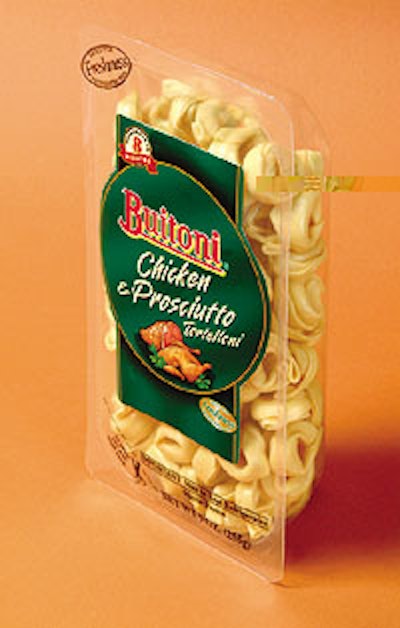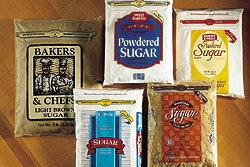
Nestlé is using the oxygen-absorbing film in the lidding material on its line of refrigerated Buitoni pastas, both filled and cut varieties.
“This innovative new package doesn’t look any different to consumers, yet it will extend Buitoni pasta shelf life by 50 percent,” says Nestlé marketer Margaret Sasina. “That makes a difference in the marketplace. The material is more expensive than traditional film, yet its benefits allow us to extend the shelf life of our product while preserving our quality. This allows us to increase our supply chain efficiencies. We’re also expanding into new markets.”
Precise specs on the breakthrough lidding material are not available. What Cryovac does say is that it’s a 3.5-mil multilayer lamination that includes an outer skin of polyester married to a coextrusion that includes the active scavenger.
The scavenger becomes activated only when it’s triggered, which is why Cryovac calls OS1000 the “stealth” scavenger. Triggering is done by ultraviolet light banks in a Series 4100 unit, also developed by Cryovac. These light banks are mounted near the horizontal form/fill/seal equipment that Nestlé uses to package its Buitoni pasta. Evacuation and a backflush of unnamed gases removes the vast majority of oxygen in the pack. What’s left falls prey to the stealth scavenger system.
Having the scavenger present in the film obviates any need for a secondary piece of packaging, such as a stand-alone sachet or a sachet affixed as a pressure-sensitive label to the inside of the lidding material. These options are sometimes perceived as unsightly, at least compared to an invisible scavenger embedded in a film.
The key to such a system, of course, is the polymer’s ability to go from dormant to active. Lacking this unique characteristic, special barrier wrapping of some kind would be needed to prevent scavenging from activating during distribution and storage of the lidstock. This way, the material is handled just as any ordinary lidstock would be.
“This new film had not been used for packaged food previously, except with a few meat products, so it was tested extensively in our organization to prove its effectiveness,” says Sasina. Cryovac’s Chip Bolton says Nestlé’s commitment to commercializing the technology was crucial. “Nestlé has been given an exclusive on the technology for ‘fresh pasta’ for a limited time,” Bolton adds. (PR)






















